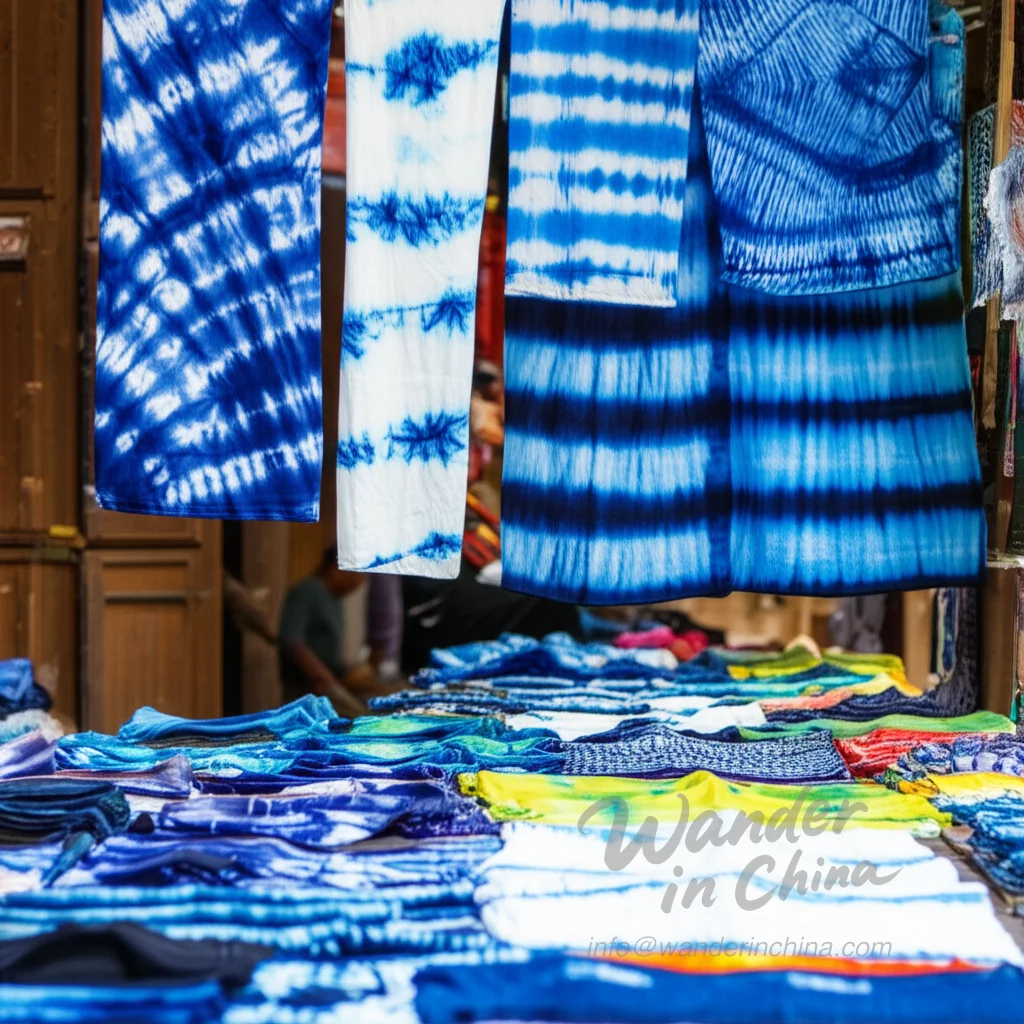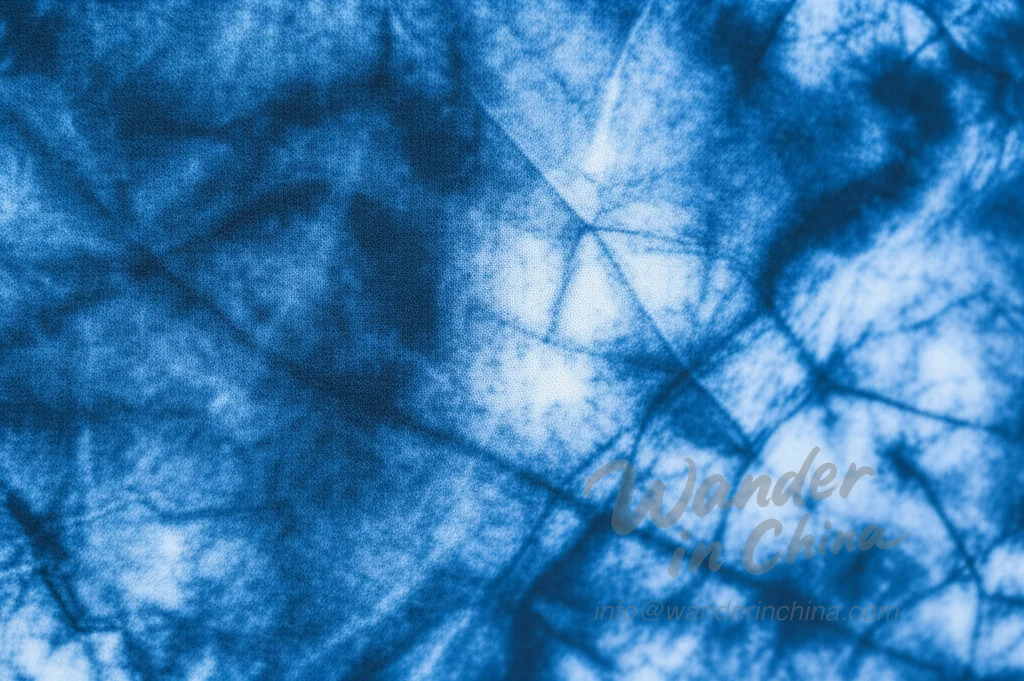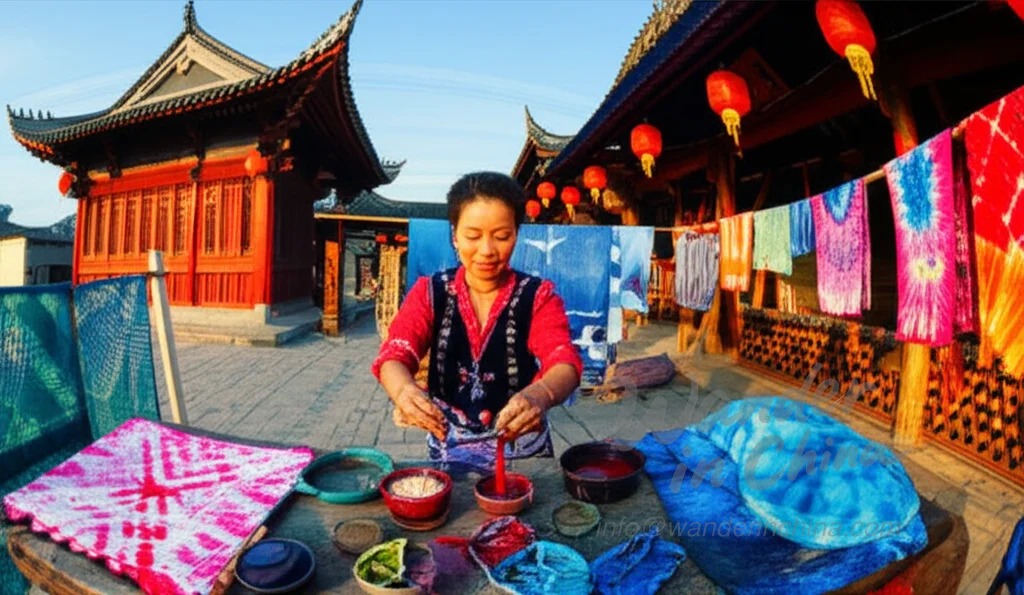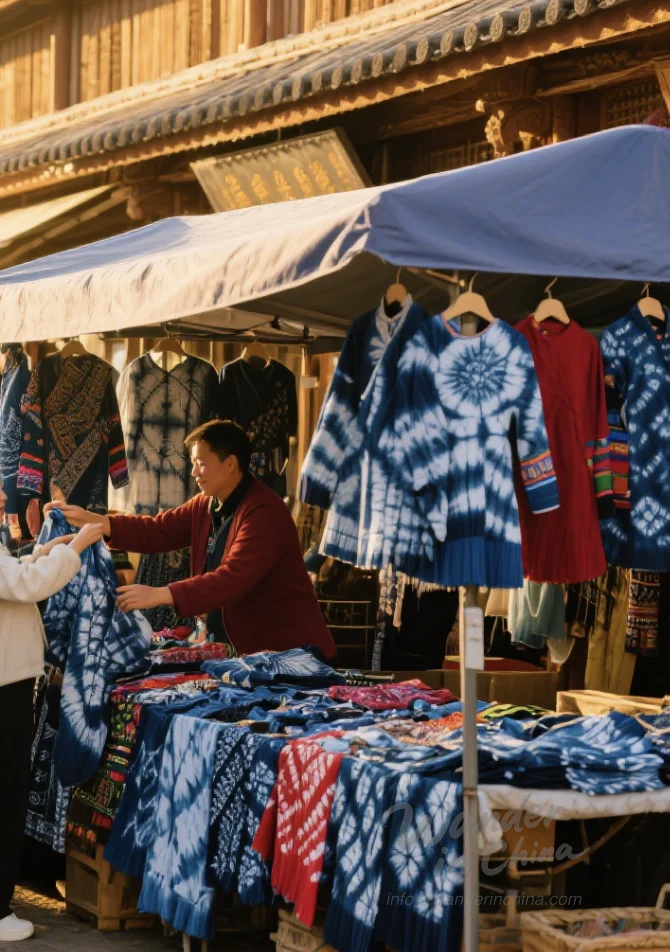Explore Tie-Dye (Zharan) in China: A Traveler's Art Guide

Introduction to Tie-Dye (Zharan): An Ancient Chinese Art
Tie-dye, known as zharan (扎染) in Chinese, is more than just a textile art; it’s a vibrant expression of Chinese culture and history. For centuries, this technique of resist-dyeing fabric has been practiced across the country, evolving into unique regional styles and playing a significant role in the traditions of various ethnic minorities. This guide explores the fascinating world of zharan, offering insights into its origins, techniques, and where you can experience this captivating art form firsthand.
What is Zharan and its significance in Chinese culture
Zharan involves folding, twisting, pleating, or crumpling fabric and binding it before applying dye. The tied areas resist the dye, creating intricate patterns and designs. Beyond its aesthetic appeal, zharan holds cultural significance, often reflecting the beliefs, history, and artistic sensibilities of the communities where it’s practiced. From clothing and accessories to home décor, zharan adds a touch of artistry and tradition to everyday life.
Brief history and origins of tie-dye in China
The history of Chinese tie dye history can be traced back to the Qin Dynasty (221-206 BC), with evidence found in ancient tombs. The art flourished during the Tang Dynasty (618-907 AD), becoming a popular textile dyeing method. Over time, different regions developed their own distinct styles and techniques, influenced by local materials, cultural practices, and artistic preferences. Today, zharan continues to be a living art form, cherished for its beauty and cultural heritage.

Regional Variations and Ethnic Influences
The beauty of zharan lies in its diversity. Different regions and ethnic groups have developed unique styles and techniques, resulting in a rich tapestry of tie-dye traditions across China.
Yunnan Province: Dali Bai Tie-Dye ([Dali Bai Tie-Dye: A Deep Dive])
Yunnan Province is particularly renowned for its tie-dye, especially the zharan produced by the Bai people in Dali. The Dali Bai Tie-Dye is characterized by its indigo-blue and white patterns, often depicting natural motifs such as flowers, birds, and landscapes. Learn more about this unique art form in our detailed guide: Dali Bai Tie-Dye: A Deep Dive into Yunnan’s Textile Heritage.
Guizhou Province: Miao Tie-Dye Traditions ([Miao Tie-Dye: Intricate Patterns and Techniques from Guizhou])
Guizhou Province is home to the Miao people, who have their own distinct tie-dye traditions. Miao Tie-Dye is known for its intricate patterns, vibrant colors, and the use of wax resist techniques in combination with tie-dye. Discover the secrets behind these stunning textiles: Miao Tie-Dye: Intricate Patterns and Techniques from Guizhou.

The Tie-Dye Process: Techniques and Materials
The zharan tie dye technique involves several steps, from preparing the fabric to applying the dye and creating the desired patterns.
Traditional methods vs. modern adaptations
Traditionally, zharan is done entirely by hand, using simple tools and natural dyes. Modern adaptations may incorporate new technologies and synthetic dyes, but the fundamental principles remain the same. The process typically involves folding, twisting, stitching, or binding the fabric to create resist areas.
Natural dyes used in Chinese tie-dye
Natural dyes are an integral part of traditional Chinese tie-dye. Common sources include indigo (from plants), madder (for red), and turmeric (for yellow). These natural dyes not only impart beautiful colors but also add a unique depth and character to the fabric. The specific plants used often vary depending on the region and the availability of resources.
Where to Experience and Buy Tie-Dye in China
For travelers interested in experiencing and buying authentic Chinese tie-dye, Yunnan and Guizhou provinces are the best places to visit.
Markets and workshops in Yunnan and Guizhou
Dali in Yunnan and various towns in Guizhou offer vibrant markets where you can find a wide selection of zharan products. Many artisans also offer tie dye workshops China, providing hands-on experiences and the opportunity to create your own unique tie-dye pieces.
Online retailers selling authentic Chinese tie-dye
If you can’t make it to China, several online retailers specialize in selling authentic Chinese tie-dye. Be sure to research the sellers and look for those who work directly with artisans to ensure fair prices and quality products. Buying Authentic Chinese Tie-Dye: A Souvenir Guide for Travelers ([Buying Authentic Chinese Tie-Dye: A Souvenir Guide for Travelers]) provides helpful tips.

Tips for Travelers Interested in Tie-Dye
Here are some tips to help you make the most of your tie-dye experience in China.
Participating in a tie-dye workshop
Consider participating in a DIY tie dye China travel workshop to learn the techniques firsthand and create your own souvenir. This is a great way to connect with local artisans and gain a deeper appreciation for the art form. Check out DIY Tie-Dye Workshop in China: A Hands-On Cultural Experience for more information.
Respecting local traditions and artisans
When visiting tie-dye workshops or markets, be respectful of local traditions and artisans. Ask permission before taking photos and be mindful of bargaining practices. Supporting local artisans helps preserve this cultural heritage.
Finding unique and authentic tie-dye products
Look for unique tie-dye patterns China and authentic tie-dye products that reflect the regional styles and techniques. Pay attention to the quality of the fabric and the dyes used. Ask the artisans about the origins and the meaning behind the designs.
The Future of Tie-Dye in China: Preservation and Innovation
The future of zharan in China depends on both preserving traditional techniques and embracing innovation. Efforts are being made to promote the art form, support local artisans, and educate younger generations about its cultural significance. By combining traditional knowledge with modern designs and techniques, zharan can continue to thrive and evolve.
Conclusion: Why Tie-Dye is a Unique Cultural Experience in China
Tie-dye in China offers a unique and immersive cultural experience. From its ancient origins to its regional variations and ethnic influences, zharan is a testament to the country’s rich artistic heritage. Whether you’re exploring the markets of Yunnan, participating in a tie-dye workshop, or simply admiring the intricate patterns, zharan provides a glimpse into the heart and soul of Chinese culture.